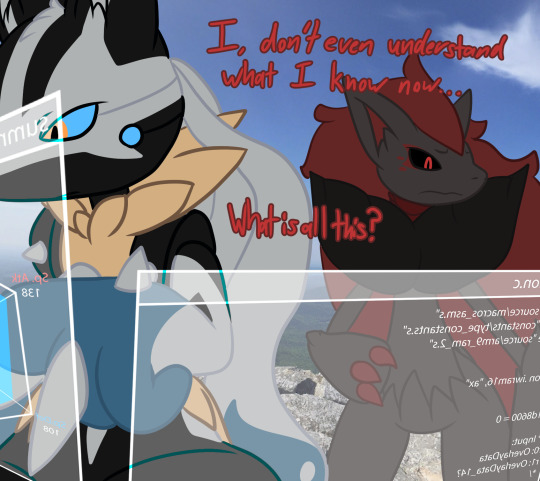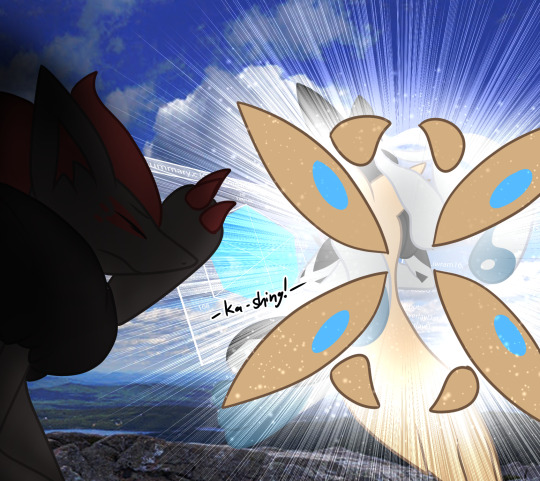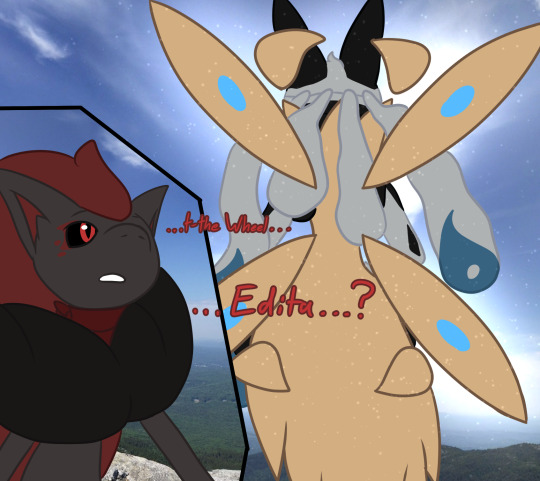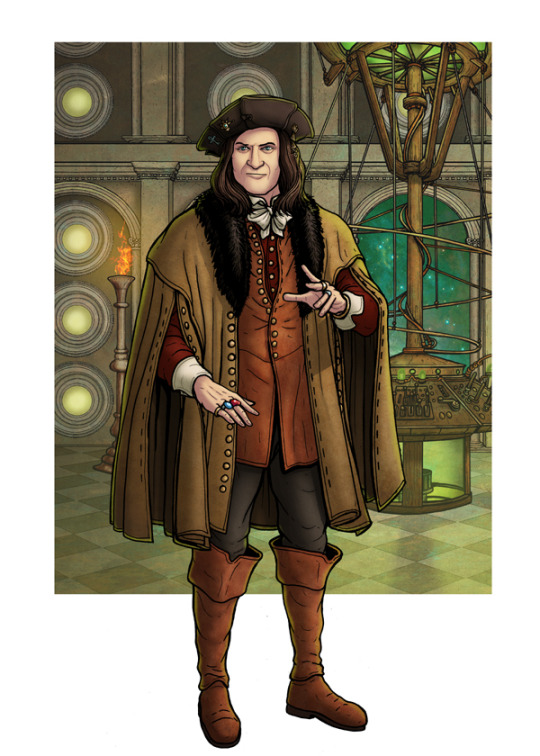#[further experimentation is needed to contrast other universes' vampirisms to what's appeared in mine]
Photo


Yamiko: These are windows, they let me peer into the inner workings of existence, they just so happen to be trained upon you and this new, strange condition of yours.
Galya: What... but, how are you able to do this...?



Yamiko: I prefer Edare nowadays, and while in this form I go by Yamiko. Your reverence is appreciated, but not entirely necessary.
#YamikoLucario#GalyaZoroark#zoroark#lucario#pokemon#*#mega lucario#plot#[so holy symbology and iconography do not have an appreciable effect. namely repulsion as it's been described in worlds above mine]#[perhaps it could be the intention behind the symbology that has an effect rather than the symbols on their own?]#[further experimentation is needed to contrast other universes' vampirisms to what's appeared in mine]#[i think i have just the opportunity in mind...]#((gonna be real: not really feeling this post but that might be a lil burnout talking))#((2020's been a Fuck but i survived so take that u long-fingered horngus of a year))#((a few more posts to smooth things out n then im sending these two to the fox festival so be ready for that!))
63 notes
·
View notes
Text
Philip Purser-Hallard Q&A
Our final Q&A is with Forgotten Lives’ editor Philip Purser-Hallard. His story for the book, ‘House of Images’, features the Robert Banks Stewart Doctor, and opens like this:
‘The usual dreadful creaking and bellowing from the rooms above the dusty office informed me that the Doctor would soon be coming down to check on my progress. I really don’t know what he does up there to make that racket. If you asked me, I’d have to guess that he’s trying to invent a mechanical walrus, and enjoying some success.
‘Honestly, Auntie, I wouldn’t put it past him. My employer is a strange man, with obsessive interests and a deeply peculiar sense of humour.’
FL: Tell us a little about yourself.
PPH: I’m a middle-aged writer, editor and Doctor Who fan; also a husband, father, vegetarian, cat-lover, beer-drinker and board games geek.
A couple of decades ago I wrote stories for some of the earliest Doctor Who charity ‘fanthologies’, Perfect Timing 2 and Walking in Eternity (whose co-editor, Jay Eales, has contributed to Forgotten Lives). These led directly to my published work in multiple Doctor Who spinoff and tie-in series, starting with Faction Paradox.
Since then, among other things, I’ve written a trilogy of urban fantasy political thrillers for Snowbooks, and two Sherlock Holmes novels for Titan Books. I’ve also edited six volumes of fiction for Obverse Books, in the City of the Saved and Iris Wildthyme series. And I founded, coedit, and have written two-and-a-half books for, The Black Archive, Obverse’s series of critical monographs on individual Doctor Who stories. (Mine are on Battlefield, Human Nature / The Family of Blood and Dark Water / Death in Heaven.)
But those two anthologies are where it all started.
FL: How did you conceive this project?
PPH: I’m fascinated by unconventional approaches to Doctor Who, an interest fostered by three decades spent reading the Virgin New Adventures, the BBC Eighth Doctor Adventures and such experimental spinoffs as Faction Paradox and Iris Wildthyme. (Again, I’m glad to have worked with alumni of those series, including Simon Bucher-Jones and Lance Parkin, on Forgotten Lives.) I love the Doctor Who extended universe when it’s at its most radical, questioning, deconstructive and subversive. The Morbius Doctors, standing outside the canon with a foot in the door, are a great vehicle for exploring that.
Once I had the idea for the anthology, the charitable cause followed naturally. These are the lives that the later Doctors have forgotten, and that loss of identity and memory could only put me in mind of the experience of my grandmother, who lived with Alzheimer’s for many years before her death. Gran was a shrewd, intelligent woman, and it was deeply upsetting to see her faculties steadily deserting her. All charities are going through straitened times at the moment, of course, and all of them are in need of extra support, but I felt Alzheimer’s Research UK was particularly worth my time and effort.
FL: Each story in the book features a different incarnation of the Doctor. Tell us about yours.
PPH: As I’ve written him, the Robert Banks Stewart Doctor is a grumpy, ebullient name-dropper with quietly brilliant detective skills and a penchant for deniable meddling. So far, so quintessentially Doctorish, but this incarnation also has an unusual interest in magic and alchemy, a long-term mission on Earth, and an old nemesis demanding his attention.
FL: These Doctors only exist in a couple of photos. How did you approach the characterisation of your incarnation?
PPH: The photo of scriptwriter Robert Banks Stewart that appears onscreen in The Brain of Morbius has a grim look on his face, but there’s another where he seems to be having a lot more fun in the costume. I played with that contrast by making his Doctor a man of excessive, rather theatrical moods, curmudgeonly and charming by turns. With his fur collar, there’s something rather bearlike about him, which made me envisage as quite physically large.
I also love Paul Hanley’s artwork for the character, where he elaborates on the costume to portray this Doctor as a kind of renaissance alchemist – Paul says ‘I like the idea that this is the Doctor who was most interested in “magic”, psychic phenomena, etc.,’ and I certainly leaned into that.
Banks Stewart’s own persona comes through in the Doctor’s Scottish accent and in some of the story choices. Both the Doctor Who scripts he wrote are set in contemporary Britain, so this Doctor’s story is a ‘contemporary’ one – though the timeframe I was envisaging for these forgotten Doctors means that works out as the 1940s. Banks Stewart created the TV detective series Bergerac and Shoestring, and so this Doctor fancies himself as a detective. And he also wrote for The Avengers (and for the Doctor and Sarah rather as if they were appearing in The Avengers), so there’s a flavour of that in the action, the whimsy, and the relationship between the Doctor and his secretary, Miss Weston.
FL: What's your story about?
PPH: The Doctor is in early-1940s London, observing the geopolitical progress of World War II on behalf of the mysterious power he represents, when he’s distracted by a burglary carried out by men bearing a close resemblance to the comedy duo Laurel and Hardy. This brings him into conflict with a figure from his past, a sorcerer known as ‘the Magus’, who represents another cosmic faction with its own agenda.
FL: The stories are intended to represent a ‘prehistory’ of Doctor Who before 1963. How did that affect your approach?
PPH: Since the eight forgotten Doctors are supposedly the incarnations preceding Hartnell, it was part of the concept from the first that these stories would reconstruct – thematically and narratively, though not in terms of TV production values – Doctor Who as it ‘would have been’ in the 1940s, 50s and early 60s. In one sense that’s a very conservative approach, but it also highlights the ways in which Doctor Who in reality has been a product of its various times.
For my own story I drew on two mid-20th-century influences – Charles Williams, a friend of CS Lewis and JRR Tolkien, who before his death in 1945 wrote occult thrillers infused with his own very eccentric brand of Christianity; and the Basil Rathbone Sherlock Holmes films set during World War II. Between them they led me to this story of a magicianly Doctor doing detective work and getting involved with affairs of state during the Blitz, and to provide him with his very own sorcerous Moriarty.
FL: Who would be your ideal casting for a pre-Hartnell Doctor?
PPH: The other authors have given most of the good answers already – Margaret Rutherford, Alec Guinness, Waris Hussein or Verity Lambert, Peter Cushing – so I’ll say either Boris Karloff or a young Mary Morris, depending on taste.
FL: What other projects are you working on at present?
PPH: I’ve got a short story and a novel for Sherlock Holmes in the works; plus another Holmes novel partly written, with a more unusual premise, that I’m trying to persuade someone to publish. I’m editing the next batch of Black Archives, of course, and writing our book on the Jodie Whittaker story The Haunting of Villa Diodati, which is due out in December 2021. And I have further ideas for original novels that I really need to devote more of my time to. One of them’s got vampires in.

#philip purser-hallard#forgotten lives#obverse books#robert banks stewart#the banks stewart doctor#morbius doctors#the brain of morbius#doctor who#dr who#doctorwho#drwho#fanthologies#paul hanley
4 notes
·
View notes